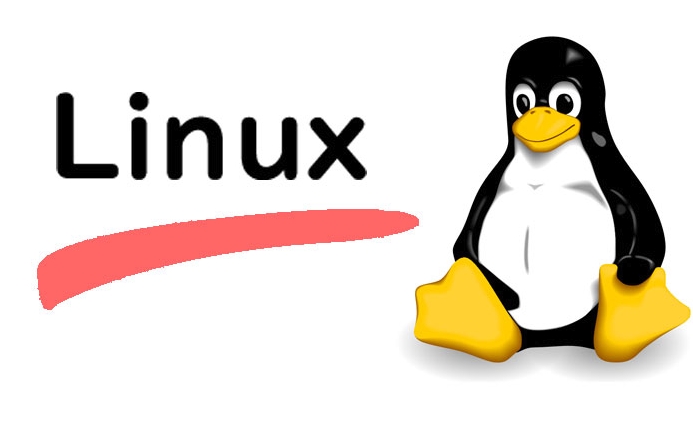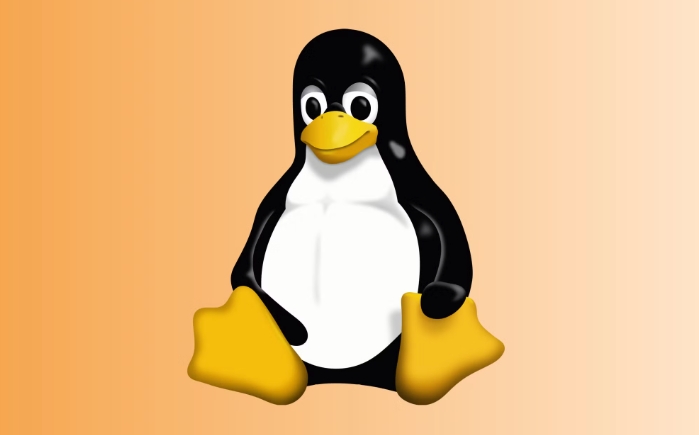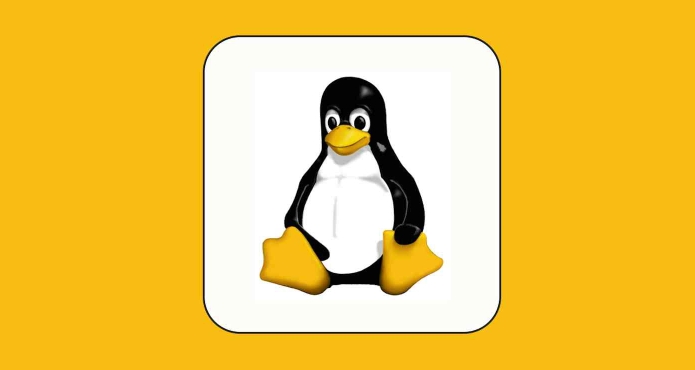Linux is an open source operating system kernel and has now developed into a variety of distributions such as Ubuntu, Debian, and CentOS. 1. The kernel is the core of the system, managing hardware resources and providing an operating environment; 2. Linux is open source free, and Windows/macOS is closed source commercial; 3. Most Linux users are developers and advanced users, stable and secure, suitable for servers; 4. High degree of freedom, good performance, strong community support, suitable for development and learning; 5. It can be tried through virtual machines, beginner distributions, and Live CD modes.

Linux is an open source operating system kernel that was originally developed in 1991 by Finnish programmer Linus Torvalds. It is now not just a kernel, but a complete set of operating systems built on this kernel, which are usually called Linux distributions, such as Ubuntu, Debian, CentOS, etc.

What is an operating system kernel?
The operating system kernel is the core part of the operating system, responsible for managing the system's hardware resources, such as CPU, memory, hard disk, etc., and providing an operating environment for applications. You can understand it as the "brain of the operating system".

- It controls how the program accesses the hardware.
- It manages process scheduling and memory allocation.
- It ensures that different software can work together.
Both Windows and macOS have their own proprietary kernels, while the Linux kernel is open source, and anyone can view, modify, and distribute its source code.
What is the difference between Linux and Windows and macOS?
Although they are all operating systems, there are many differences in user experience and technical background:

- Open Source vs Close Source : Linux is open source, which means it is free to use and community-driven development; while Windows and macOS are commercial operating systems, and the code is not disclosed to the public.
- Different user groups : Windows is mainly aimed at ordinary users and enterprise markets, macOS is aimed at Apple ecosystem users, while Linux is more popular among developers, system administrators and advanced users.
- Stability and security : Linux is famous for its stability and security, and many servers use Linux systems to run services for a long time.
- Interface diversity : Linux provides a variety of desktop environments (such as GNOME, KDE), and users can choose different appearances and operation methods according to their preferences.
Why do many people like to use Linux?
There are several key reasons why Linux is popular, especially in the technology circle:
- High degree of freedom : You can customize almost all system settings, which can be adjusted from the startup screen to the underlying system behavior.
- Good performance : The system resources are relatively low, suitable for old computers or servers that require high performance.
- Strong community support : When encountering problems, you can get a lot of help through forums, documents, GitHub and other channels.
- Suitable for learning and development : Many programming languages ??and development tools naturally support Linux, and you can directly access the underlying layer of the system, which helps you to have an in-depth understanding of computer principles.
For example, if you are developing Python or building a website server, using Linux will be more convenient than Windows, because many tools can be installed directly through commands without cumbersome configuration.
How to get started with Linux?
If you are a novice, you can start from the following aspects:
- Try installing a Linux distribution using a virtual machine such as VirtualBox or VMware.
- Download a distribution suitable for beginners, such as Ubuntu or Linux Mint.
- Try "Live CD" mode, that is, you can run directly without installing the system to see if you adapt.
- Learn basic terminal commands, which are important for using Linux.
In fact, you don’t have to worry too much about “whether it can be used”. The current Linux graphical interface is already very friendly, and most daily operations can be completed through clicks.
Basically that's it. Linux is not as mysterious as you imagined. It is just an operating system, which just gives you more control.
The above is the detailed content of What is Linux?. For more information, please follow other related articles on the PHP Chinese website!

Hot AI Tools

Undress AI Tool
Undress images for free

Undresser.AI Undress
AI-powered app for creating realistic nude photos

AI Clothes Remover
Online AI tool for removing clothes from photos.

Clothoff.io
AI clothes remover

Video Face Swap
Swap faces in any video effortlessly with our completely free AI face swap tool!

Hot Article

Hot Tools

Notepad++7.3.1
Easy-to-use and free code editor

SublimeText3 Chinese version
Chinese version, very easy to use

Zend Studio 13.0.1
Powerful PHP integrated development environment

Dreamweaver CS6
Visual web development tools

SublimeText3 Mac version
God-level code editing software (SublimeText3)

Hot Topics
 5 Best Open Source Mathematical Equation Editors for Linux
Jun 18, 2025 am 09:28 AM
5 Best Open Source Mathematical Equation Editors for Linux
Jun 18, 2025 am 09:28 AM
Are you looking for good software to write mathematical equations? If so, this article provides the top 5 equation editors that you can easily install on your favorite Linux distribution.In addition to being compatible with different types of mathema
 SCP Linux Command – Securely Transfer Files in Linux
Jun 20, 2025 am 09:16 AM
SCP Linux Command – Securely Transfer Files in Linux
Jun 20, 2025 am 09:16 AM
Linux administrators should be familiar with the command-line environment. Since GUI (Graphical User Interface) mode in Linux servers is not commonly installed.SSH may be the most popular protocol to enable Linux administrators to manage the servers
 Gogo - Create Shortcuts to Directory Paths in Linux
Jun 19, 2025 am 10:41 AM
Gogo - Create Shortcuts to Directory Paths in Linux
Jun 19, 2025 am 10:41 AM
Gogo is a remarkable tool to bookmark directories inside your Linux shell. It helps you create shortcuts for long and complex paths in Linux. This way, you no longer need to type or memorize lengthy paths on Linux.For example, if there's a directory
 What is a PPA and how do I add one to Ubuntu?
Jun 18, 2025 am 12:21 AM
What is a PPA and how do I add one to Ubuntu?
Jun 18, 2025 am 12:21 AM
PPA is an important tool for Ubuntu users to expand their software sources. 1. When searching for PPA, you should visit Launchpad.net, confirm the official PPA in the project official website or document, and read the description and user comments to ensure its security and maintenance status; 2. Add PPA to use the terminal command sudoadd-apt-repositoryppa:/, and then run sudoaptupdate to update the package list; 3. Manage PPAs to view the added list through the grep command, use the --remove parameter to remove or manually delete the .list file to avoid problems caused by incompatibility or stopping updates; 4. Use PPA to weigh the necessity and prioritize the situations that the official does not provide or require a new version of the software.
 Install LXC (Linux Containers) in RHEL, Rocky & AlmaLinux
Jul 05, 2025 am 09:25 AM
Install LXC (Linux Containers) in RHEL, Rocky & AlmaLinux
Jul 05, 2025 am 09:25 AM
LXD is described as the next-generation container and virtual machine manager that offers an immersive for Linux systems running inside containers or as virtual machines. It provides images for an inordinate number of Linux distributions with support
 How to create a file of a specific size for testing?
Jun 17, 2025 am 09:23 AM
How to create a file of a specific size for testing?
Jun 17, 2025 am 09:23 AM
How to quickly generate test files of a specified size? It can be achieved using command line tools or graphical software. On Windows, you can use fsutilfilecreatenew file name size to generate a file with a specified byte; macOS/Linux can use ddif=/dev/zeroof=filebs=1Mcount=100 to generate real data files, or use truncate-s100M files to quickly create sparse files. If you are not familiar with the command line, you can choose FSUtilGUI, DummyFileGenerator and other tool software. Notes include: pay attention to file system limitations (such as FAT32 file size upper limit), avoid overwriting existing files, and some programs may
 How to install Linux alongside Windows (dual boot)?
Jun 18, 2025 am 12:19 AM
How to install Linux alongside Windows (dual boot)?
Jun 18, 2025 am 12:19 AM
The key to installing dual systems in Linux and Windows is partitioning and boot settings. 1. Preparation includes backing up data and compressing existing partitions to make space; 2. Use Ventoy or Rufus to make Linux boot USB disk, recommend Ubuntu; 3. Select "Coexist with other systems" or manually partition during installation (/at least 20GB, /home remaining space, swap optional); 4. Check the installation of third-party drivers to avoid hardware problems; 5. If you do not enter the Grub boot menu after installation, you can use boot-repair to repair the boot or adjust the BIOS startup sequence. As long as the steps are clear and the operation is done properly, the whole process is not complicated.
 NVM - Install and Manage Multiple Node.js Versions in Linux
Jun 19, 2025 am 09:09 AM
NVM - Install and Manage Multiple Node.js Versions in Linux
Jun 19, 2025 am 09:09 AM
Node Version Manager (NVM) is a simple bash script that helps manage multiple Node.js versions on your Linux system. It enables you to install various Node.js versions, view available versions for installation, and check already installed versions.NV






